As the end of the year approaches, it's time to start planning which B2B SEO initiatives to prioritize in 2023. We’ve sorted through the latest SEO trends and analyzed recent drivers of success for our clients to gather the top ten B2B SEO tips for your 2023 strategy. Without further ado, let’s dive in.
1) Implement GA4 As Soon As Possible
It's no secret that Google is sunsetting GA Classic in July 2023. If you haven’t already, it’s helpful to implement GA4 while running GA Classic to get a baseline historical reference to understand the difference in numbers being reported. GA4 doesn't have the out-of-the-box reporting that GA Classic does, so it takes a little more customization to achieve a similar setup to your current GA Classic configuration. This can be especially true for landing page reports and goal/conversion configuration.
While reporting and configuration will present some challenges, GA4 also promises to enhance data accuracy. Exciting new GA4 features to look forward to include:
-
Combining website and app data
-
Applying data modeling to conversion attribution
-
Google profile activity from logged-in users
-
ID numbers tracking
To get a better understanding of the new platform and maximize its potential, we recommend becoming GA certified via Google.
2) Ensure Privacy Compliance
Privacy laws can be a difficult hurdle for many marketers, but ensuring compliance is vital to the success of your strategies and the health of your business. Privacy laws are always changing, and they can differ from region to region. When conducting SEO reporting, it’s important to consider how privacy laws are affecting the accuracy of your data.
For example, most European countries require users to opt-in for their data to be tracked. In the U.S., most companies require users to opt-out to avoid being tracked. This difference can have a big impact on traffic visibility outside the U.S. Keep this in mind when analyzing SEO reporting from regions with opt-in policies.
Additionally, you may want to consider Google Consent Mode, which allows top-line metrics to be collected for people who do not opt-in while maintaining privacy compliance.
3) Re-Vamp SEO Content Strategy
Matching user intent to content has never been more important for high organic rankings and visibility–and this is especially true for B2B sites. In the past, sites could rank well if they had off-nav pages and relevant link connectivity. That combination can still yield results, but more often it's informational, top-of-funnel content that is ranking for broad, competitive keywords.
It’s important to periodically review what kind of content has the most visibility for your targeted search results. High-ranking content types of the moment include:
-
Defining a phrase or term (i.e. What is SEO?)
-
First Party Review content (your review of something you’ve actually tried)
-
Articles that compare one term to another (i.e. What’s the Difference Between SEO and SEM?)
-
Comprehensive guides to a subject
-
Numbered articles (10 Ways to Beat the Heat)
Of course, these trends are subject to change… and it is almost certain that they will. That’s why constant monitoring of search results and consistent production of thought leadership are important parts of a successful content strategy.
Lastly, it’s worth noting that Google has recently announced that they’re not proponents of AI-driven content for search results, so be judicious in the way that you apply AI to content production. Using AI to surface relevant topics or outlines may be useful, as well as using it to analyze content gaps based on entity relationships or topic correlation–but we recommend against using AI to generate content without any human oversight or input. Let’s not give the robots too much power.
4) Create More Visual Content
One of the promises of Google's MuM algorithm that launched in 2021 was to better unify Google's understanding of images and videos to keywords and topics. That improved ability has translated into richer search results that provide a more visual search experience to users.
At SMX Next in October of 2022, Google VP of Search, Hyung-Jin (HJ) Kim, confirmed that Google is purposely moving towards a more visual search experience. Concurrently, we have seen a huge uptick in the amount of image and video content that’s appearing on the front page of search results. Since Google has switched to infinite scroll on desktop (in the U.S.), search results feel similar to the social media experience, capturing users' attention in the format they’ve grown accustomed to.
So, what does this mean for you?
In 2023, brands will need to include video and images that add value to textual content and maximize potential screen real estate. And we recommend starting soon–it’s likely your competitors are. Start by identifying keywords you already rank well for with text content and create images and videos that add value to that content.
5) Implement Structured Data
While structured data is not a ranking factor, this element has become increasingly important. This is because structured data has the potential to qualify your content for certain search enhancements in organic results and makes it easier for Google to understand your content.
Going forward, it’s essential for B2B SEO to implement relevant schema across all digital content to maximize visibility and take advantage of these search enhancements. At a bare minimum, we recommend implementing the following schema types to ensure that you are competitive:
-
Web Page / Article
-
Image
(*image schema is not a stand-alone schema type but is an element of other schema types like an article or product schema) -
Video
-
Organization
-
Author
-
FAQ
-
Product (for B2B companies with eCommerce)
-
Review
We recommend that digital marketers be familiar with which schema types Google and Bing support, what enhancements they are capable of generating, and how they can be correctly implemented in your environment.
For product schema, it should be noted that Google Search Console has recently started flagging errors with product schema as negatively affecting the ability to show up in merchant listings.
6) Maximize E-A-T Signals
Google defines "E-A-T" as Expertise, Authority and Trust. While not strictly a ranking factor, E-A-T has an impact on which content appears on search engine results pages.
One of the unique aspects of E-A-T is that it’s determined by real, human Search Engine Evaluators using specific guidelines. Their input is then used to train the machine-learning aspects of the ranking algorithm. This can make it difficult to optimize for E-A-T, however, we’ve been able to glean insights from Google’s guidelines and successful optimization techniques.
Here’s a list of opportunities for ensuring that you’re sending Google signals that your content meets their E-A-T standards:
- Implement organization schema.
- Ensure that your Google Business profile is accurate, up-to-date, and consistently refreshed.
- Make sure Wikipedia articles about your business, your products, and, in some cases, your people, are accurate and up-to-date. If you don't have a Wikipedia page about your business, we recommend publishing one.
- Implement article schema on content that references a specific author within your organization. Add links to the author schema on the article page that leads to an author biography page. This recommended functionality was recently confirmed in an official Google changelog, which you can view here.
- Promote your site and content to highly relevant websites to attract meaningful links Google would consider authoritative. Backlinks are of course a well-known ranking factor, but may also be an E-A-T signal for quality.
- Consistently author high-quality, unique thought leadership that answers common questions related to your topic or industry. It’s important to remember that, in order to rank for broad keywords, you want to appeal to the majority of people searching for your chosen phrases, not just your potential customers. Try monitoring popular ranking pages, then outdo their content quality.
7) Conduct Ongoing Conversion Rate Optimization Testing
Conversion rate optimization and continuous testing of CTAs, messaging, and engagement rates should be a staple of any B2B SEO strategy. Monitoring page titles, metadata, on-page content, and conversion points is necessary for all content but can be especially helpful for high-volume traffic pages that feature top-of-funnel content.
Remember: data is everything. By continuously monitoring, analyzing, and optimizing, you can maximize ROI for your SEO budget.
8) Address Technical SEO Issues
As much as SEO is constantly changing, one thing always remains the same: the need to address technical issues related to SEO performance. Google Search Console remains the starting point for addressing those concerns. Other tools that may be helpful include Bing Webmaster Tools, Screaming Frog, DeepCrawl, Xenu, SEOClarity, Brightedge, and Conductor.
Let’s dive into one of our top recommended tools: Google Search Console. This free tool provides data that can be leveraged in a variety of ways. Here are the top functionalities that you can use on Google Search Console:
-
Schema Errors
These are found in the “enhancements” section of your interface and vary depending on what schema types you have implemented: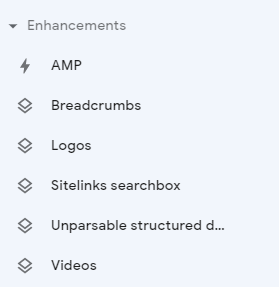
If you have a shopping site, you may find errors related to merchant listings and product snippets in the shopping area: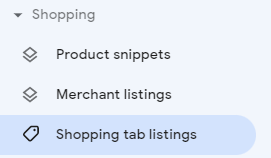
-
The new video pages report is another area that you need to keep a watchful eye on to ensure all of your videos are being correctly indexed:
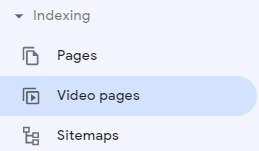
This new report details which videos are indexed, which are not, and why not:
This is a relatively new report that has a number of new technical issues that Google now flags for videos that could keep them from being indexed: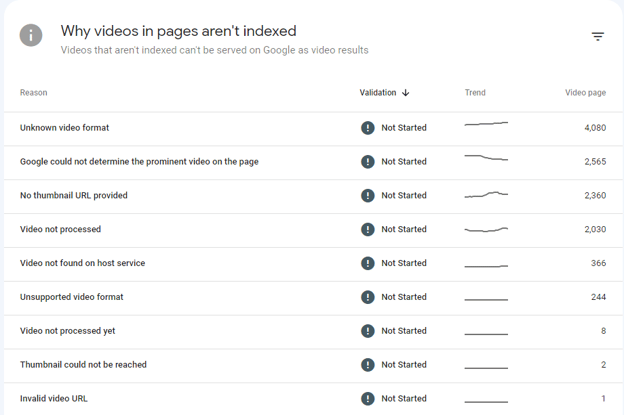
-
Make sure that everything checks out with your XML sitemaps in the Sitemaps section under Indexing:
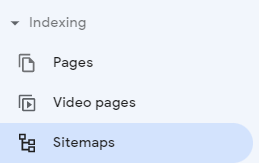
You should see a success status like in the example below:
-
The pages section has a huge number of potential data points and flags to look at that cover many issues related to duplicate content, canonical tags, indexing issues, redirects, pages not indexed, and more.

There is way too much information here to cover in one blog post – and not all of these things are necessarily errors! However, it is important that you have an experienced SEO expert look at this data, especially for large enterprise sites, and ensure that your site performance is not being harmed by any of the issues that are flagged in this section of GSC: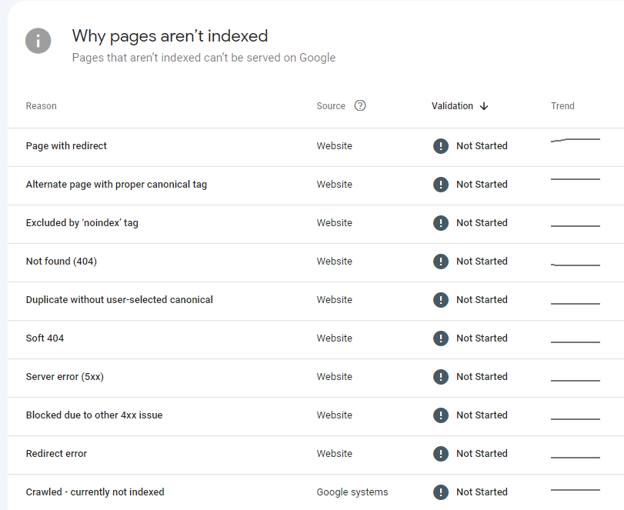
Here are a couple of important issues to watch:-
-
Check the “duplicate without user-selected” canonical tag section to see why those pages don't have canonical tags and which versions of pages Google is indexing
-
Eliminate as many 404 and soft 404 errors from your site as possible and determine if those pages should be redirected to more meaningful pages
-
-
- Last but not least on the list of technical considerations are page experience, core vitals, and mobile usability:
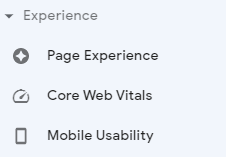
Since these technical improvements can be a challenge, you may need dev resources to make improvements. Ultimately, we recommend getting professional help with your B2B SEO to see the best results.
9) Adopt a More Strategic Approach to Link Building
Link building has been a cornerstone of the Google algorithm since the very beginning. And while links have become a less powerful ranking factor than they used to be, they’re still vital to your overall strategy
This B2B SEO trend largely occurred because older link acquisition strategies have been hard to scale cost-effectively. For example, email outreach has been a popular method, but often left marketers with low response rates or poor-quality link acquisitions.
What tends to be more effective is PR and social promotion of useful content to industry audiences, including bloggers and publishers. This gives you a broader audience outside of your prospective clients but can help you gain authority.
Keep these B2B SEO tips in mind when updating your link-building strategy for 2023:
-
Target writers and bloggers known for making new links relevant to your content
-
Occasionally publish guest blog posts on high-quality sites that demonstrate expertise and authority
-
The type of content, audience, and paid promotion channels used for link building can be different from those used for lead generation
-
Industry reports and case studies with first-party data work well for this type of campaign
-
People are used to information overload–you’ll need to work hard to cut through the noise
10) Implement an ABSEO Measurement Strategy
You’re probably wondering what ABSEO is. That’s not surprising… since BOL is a pioneer in account-based SEO. BOL is a full-performance digital agency that not only has a 20+ year history of successful B2B programs for enterprise clients, but we also have a world-class account-based marketing (ABM) practice. If you are unfamiliar with ABM, we invite you to read this Hubspot article. To make a really long story short, ABM programs are designed to market to specific companies based on a target account list (TAL) that has been vetted against an ideal customer profile (ICP). Unlike traditional demand generation marketing campaigns, ABM campaigns are hyper-focused on acquiring business from specific organizations.
To understand how those organizations interact with your site, and ultimately purchase from you, you’ll need specific technologies (like 6sense) and CRM systems (like Hubspot) to be configured in specific ways. Ensuring that company-level data is passed back into analytics programs like GA4 allows us to start segmenting behavior specific to our TAL and put greater value on those interactions.
This information can provide valuable insight into the true value of search traffic. Sometimes pages that get less of the right traffic are more important than pages that get more of the wrong traffic. It’s hard to make that determination unless you have accurate data that supports that analysis.
Connecting your tech stack in a way that can accurately measure that value and using that data to drive SEO strategy is the foundation of ABSEO.
11) Bonus Item: Revamp Ranking Reports
Keyword ranking reports have become much harder to take at face value over the years as keyword volatility has greatly increased on a day-to-day basis. In the past, weekly ranking reports were relatively stable and monthly reports were fairly indicative of changes that occurred. Now, it’s not uncommon for keywords to vary slightly in rank from day to day.
This is especially common for keywords sensitive to current events like news, sports, and events. The geo-location from where the keyword ranking is checked can also influence rankings.
To adapt to this B2B SEO trend, individual keyword rankings need multiple data points and require greater scrutiny to really understand keyword performance. This will help determine whether or not it has really improved or declined over any given period of time. We believe daily rankings for priority keywords allow us to have the best visibility into what that performance looks like, and we use a solution for our clients that tracks daily rankings for both desktop and mobile reports.
Reporting change in performance across the entire keyword set for any given month is also enhanced by having daily ranking data. Rather than reporting snapshot data that compares the last day of this month to the last day of the previous month, we take the average number of daily page one rankings and top 3 rankings for the current month and then compare it to the previous month. We use this data as a leading indicator for ranking performance changes that are most likely to affect traffic.
Exploring the variances in these numbers, and what URL-specific performance occurrences contributed to those changes, has been an effective tactic to prioritize which keyword rankings to evaluate first on any given month.
Conclusion:
At this point, we know what you're thinking. There’s a lot to do in 2023! While SEO is always evolving, 2023 promises to be a period of great change and innovation. By starting with the 2023 SEO trends above, you’ll have the best chance of setting yourself up for success.
Have a great holiday season, a Happy New Year, and a prosperous 2023!
